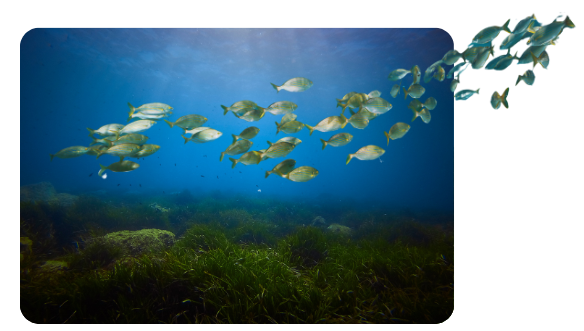Story
PML scientist leads Ocean Acidification Update of new marine climate change review
08 November 2022
Dr Helen Findlay, Biological Oceanographer at PML, led a team of internationally recognised scientists to bring together the Marine Climate Change Impacts Partnership (MCCIP) Topic Review Update on Ocean Acidification.

Image: Cold-water coral habitat off the west coast of Scotland taken during the
JC073 Changing Oceans research cruise in 2012.
Published during the 1st week of COP27 at the Marine Alliance for Science and Technology for Scotland Annual Science Meeting, these MCCIP Topic Review Updates are a comprehensive exploration of the current science on the topics of aquaculture, coastal flooding and stratification as well as ocean acidification.
The MCCIP Ocean Acidification Topic Review Update summary:
- Atmospheric carbon dioxide (CO2) exceeded 414 ppm in 2021 and has continued to increase by approximately 2.4 ppm per year over the last decade. The global ocean absorbs approximately a quarter of this anthropogenic CO2 emissions annually.
- The North Atlantic Ocean contains more anthropogenic CO2 than any other ocean basin and surface waters are experiencing a decline in pH (increased acidity).
- Some species are already showing effects from ocean acidification when exposed to short-term fluctuations and could be used as indicator species for long-term impacts on marine ecosystems.
- Models project that the pH of the average continental shelf seawater will continue to decline at similar rates as today until 2050, when rates will then increase in the second half of the century, depending on the emissions scenario used in the model run.
- The rate of pH decline in coastal areas is projected to be faster in some areas (e.g. Bristol Channel) than others (e.g. Celtic Seas).
- Under high-emission scenarios, it is projected that waters at the bottom of the north-west European shelf seas will become corrosive to more-soluble forms of calcium carbonate (aragonite), which organisms such as cold-water corals and molluscs use to build their skeletons and shells, and this is projected to begin by 2030.
- By 2100, up to 90% of the north-west European shelf seas may become corrosive to some species for at least one month of each year.
- High variability in coastal carbonate chemistry may mean that some species have a higher adaptative capacity than others. However, all species will be at an increased risk from extreme exposure episodes.
Dr Helen Findlay commented: “The science around the chemistry of ocean acidification is very well established and we have a high level of confidence that atmospheric CO2 is increasing the acidity of the ocean.”
“The main challenges for the future are monitoring changes in pH on a regular basis so that we can better understand the long term impact, which is especially difficult in remote areas, as well as improving models to capture small-scale changes in complex coastal and shelf sea environments.”
“We are also keen to explore how additional stressors, such as temperature, oxygen and metals, affect ocean acidification and also increase our ability to share data with institutes and other research groups across the world for large-scale assessment.”
“By improving these aspects we can be more prepared for future changes, however, much relies on a significant reduction in CO2 emissions and therefore, I am keen to see a major commitment to CO2 reduction activities at COP27″.
MCCIP provides high-quality, independent evidence on marine climate change impacts and guidance on adaptation advice to UK policy advisors and decision-makers.
